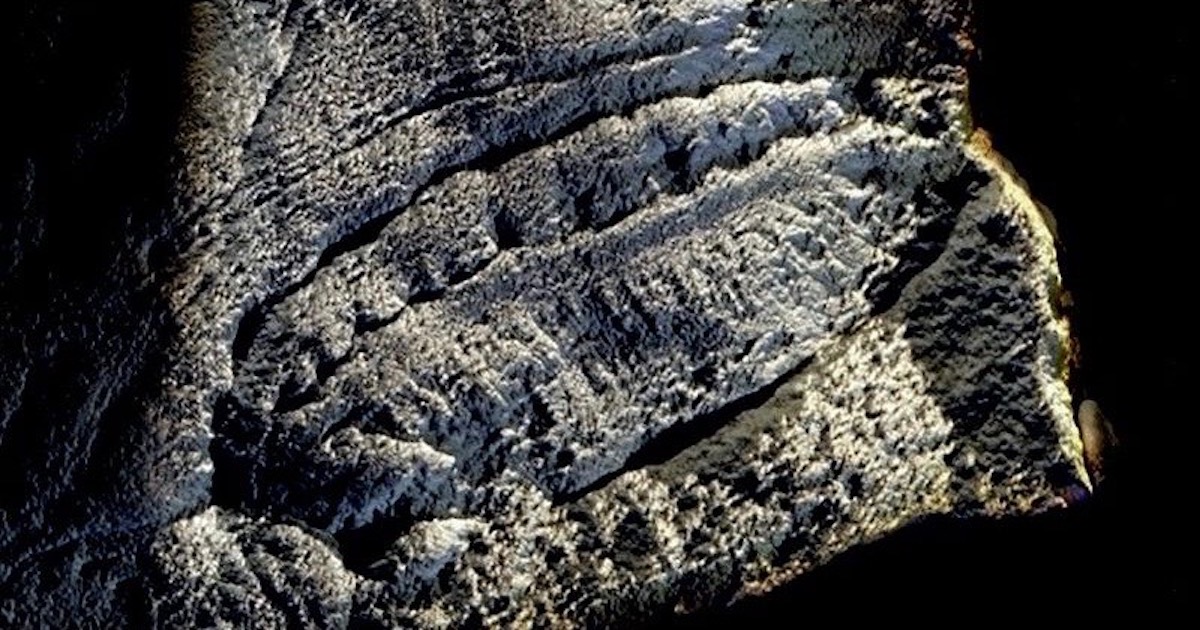 Evolution
Evolution
Kimberella — Four Phases of Interpretation

Editor’s note: We are delighted to present a series of posts by paleontologist Günter Bechly on the Ediacaran organism Kimberella. If identified as an animal, it would “predate the Cambrian explosion of bilaterian animal phyla as a kind of ‘advance guard.’” The question is of interest for debates about evolution and arguments about intelligent design raised by Stephen Meyer, among others. Find the full series about Kimberella here.
In the quite checkered history of the detailed reconstruction of Kimberella, we can distinguish four distinct successive phases:
First Phase — “Jellyfish”
Based on only seven poorly preserved specimens from the Ediacara locality in Australia, deposited at the South Australian Museum in Adelaide, the early authors suggested that Kimberella was a jellyfish (Glaessner & Daily 1959, Glaessner & Wade 1966, Wade 1972, Glaessner 1984, Jenkins 1984, 1992). It was described as medusoid organism, up to 65 mm long and 36 mm wide, with a bell-shaped body with a rounded end and a tapered (presumably open) end and a frilled margin surrounding a smooth central region. Apparently segmented zones were (incorrectly?) interpreted as gonads and gastric pouches. A late proponent of a medusoid interpretation was Dzik (2003), who suggested that Kimberella could have comb jelly affinities.
Second Phase — “Soft Limpet”
Based on 35 new specimens from the White Sea region, Fedonkin & Waggoner (1997), Fedonkin (1998), and Waggoner (1998) reconstructed Kimberella as a bilaterally symmetrical, benthic animal with an oval-to-pear-shaped, seriated body architecture. Several zones are arranged concentrically, including a U-shaped band of about 30 crenellated structures (mostly absent in small specimens, hardly increasing in number with larger specimens). These authors suggested that Kimberella was “resembling a mollusc in many respects,” such as a creeping foot and a non-mineralized, univalved, oval shell that was “fairly stiff, at least in its central part.” This reconstruction was accepted by many authors at the time (e.g., Martin et al. 2000).
Third Phase — “Soft Limpet with Eversible Proboscis and Tuberculate Shell”
This revised reconstruction by Fedonkin et al. (2007b) was based on about 800 specimens, mostly collected by Andrey Ivantsov in the White Sea region and deposited at the Paleontological Institute (PIN) in Moscow. These fossils showed that the bilaterally symmetrical body had an elongate, boat-shaped form with complex internal structure. It had a rounded broader end that was interpreted as posterior (aboral) end and a tapered narrower end interpreted as anterior (oral) end of the organism. Besides the foot that could be extended and contracted, and a mantle, the revised reconstruction included an unmineralized single stiff but flexible dorsal shell (tuberculate in juvenile specimens) and a long pro- and retractable proboscis with a single pair of teeth or thin hook-like organs articulated at its end. The axial structure was interpreted as gut and stomach. A pair of grooves near the arrow-like head was interpreted as pharyngeal glands. The conspicuous crenulated zone was interpreted as a circumpedal band of 34-36 non-overlapping folds with respiratorial function. (Fedonkin et al. 2007a said that the frill-like rim around outside of the shell may have been a circular tubular structure with protruding “finger-like structures” rather than a true frill.) Fedonkin also saw “evidence of dorso-ventral musculature and fine transverse ventral musculature,” which “suggests arrangement in a metameric pattern” (in contrast to Ivantsov 2017, who explicitly emphasized that “there are no signs of a body metamery in Kimberella“). He considered the elongation and contraction of the body and proboscis as indicating a complex system of lacunae and thus a genuine coelom. Fedonkin agreed that the trace fossil evidence documented active movement and grazing on bacterial mats. Fedonkin et al. (2007b) also first suggested that the animal moved backwards away from the oral end.
Fourth Phase — “Slug-Like”
A new reconstruction by Ivantsov (2009, 2010a, 2010b, 2012, 2013, 2017) was mainly based on the discovery of very different types of preservation in Kimberella, including strongly elongated specimens. These specimens suggested a highly contractible, extendable, and flexible worm-like body that was complex but non-metameric. This reconstruction features a bilateral symmetric organism with an elongated oval body, in which two parts are distinguished: a large trunk and a relatively small head. The head was able to completely retract into the body, and could be stretched out as a spatulate extension with a foldable series of simple spike-like structures or denticles (not homologous to a molluscan radula) on both sides of the ventral pharynx, used to tear off pieces of the bacterial mat as food. The animal had a dorsal integumental cover, which was flexible and able to stretch, presumably armored with numerous fine mineral (aragonitic?) sclerites embedded in the dorsal cuticular body wall (but there was no single dense shell!). The dorsal cover had a scalloped margin (“mantle”) with a gill cavity beneath. A flat ventral structure, which is represented by the smooth outer margin of the imprints, was interpreted as similar to a gastropod foot, used for crawling. The central part of the body was occupied by bundles of transverse muscles and a strong dorsal longitudinal muscular band, representing a retractor connecting the head with the aboral end of the body. This revised reconstruction was accepted by some other contemporary authors (e.g., Seilacher & Hagadorn 2010, Grazhdankin 2014, Parkhaev 2017, Ivantsov et al. 2019).
Some other scientists like Gehling et al (2014) rejected Ivantsov’s new reconstruction of “a spatulate extension of the body, armed with multiple spikes enabling each fan array to be made in a single stroke,” because it is not consistent with the fan-shaped sets of scratches in the associated trace fossils. Instead they rehabilitated Fedonkin’s reconstruction with a short eversible proboscis armed with a single pair of stylets or teeth.
Next, “Reconstructing Kimberella — The Anatomy in Detail.”
